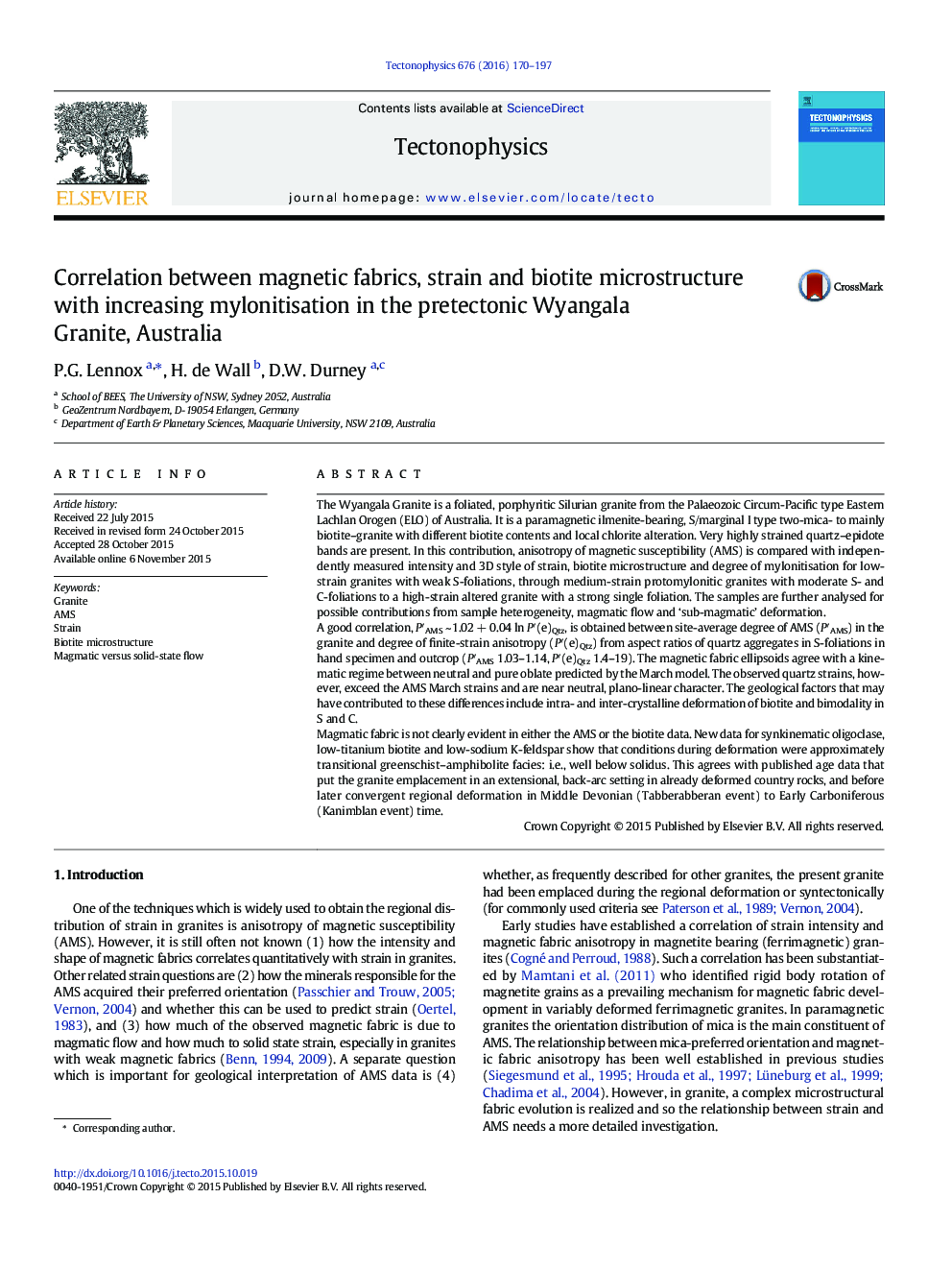| Article ID | Journal | Published Year | Pages | File Type |
|---|---|---|---|---|
| 6433417 | Tectonophysics | 2016 | 28 Pages |
â¢AMS strain correlation.â¢Flattening AMS in near plane strainâ¢Biotite deformation mechanismsâ¢Differentiating magmatic and solid state deformationâ¢Pretectonic granite
The Wyangala Granite is a foliated, porphyritic Silurian granite from the Palaeozoic Circum-Pacific type Eastern Lachlan Orogen (ELO) of Australia. It is a paramagnetic ilmenite-bearing, S/marginal I type two-mica- to mainly biotite-granite with different biotite contents and local chlorite alteration. Very highly strained quartz-epidote bands are present. In this contribution, anisotropy of magnetic susceptibility (AMS) is compared with independently measured intensity and 3D style of strain, biotite microstructure and degree of mylonitisation for low-strain granites with weak S-foliations, through medium-strain protomylonitic granites with moderate S- and C-foliations to a high-strain altered granite with a strong single foliation. The samples are further analysed for possible contributions from sample heterogeneity, magmatic flow and 'sub-magmatic' deformation.A good correlation, Pâ²AMS ~Â 1.02Â +Â 0.04Â ln Pâ²(e)Qtz, is obtained between site-average degree of AMS (Pâ²AMS) in the granite and degree of finite-strain anisotropy (Pâ²(e)Qtz) from aspect ratios of quartz aggregates in S-foliations in hand specimen and outcrop (Pâ²AMS 1.03-1.14, Pâ²(e)Qtz 1.4-19). The magnetic fabric ellipsoids agree with a kinematic regime between neutral and pure oblate predicted by the March model. The observed quartz strains, however, exceed the AMS March strains and are near neutral, plano-linear character. The geological factors that may have contributed to these differences include intra- and inter-crystalline deformation of biotite and bimodality in S and C.Magmatic fabric is not clearly evident in either the AMS or the biotite data. New data for synkinematic oligoclase, low-titanium biotite and low-sodium K-feldspar show that conditions during deformation were approximately transitional greenschist-amphibolite facies: i.e., well below solidus. This agrees with published age data that put the granite emplacement in an extensional, back-arc setting in already deformed country rocks, and before later convergent regional deformation in Middle Devonian (Tabberabberan event) to Early Carboniferous (Kanimblan event) time.
Graphical abstractDownload high-res image (146KB)Download full-size image
